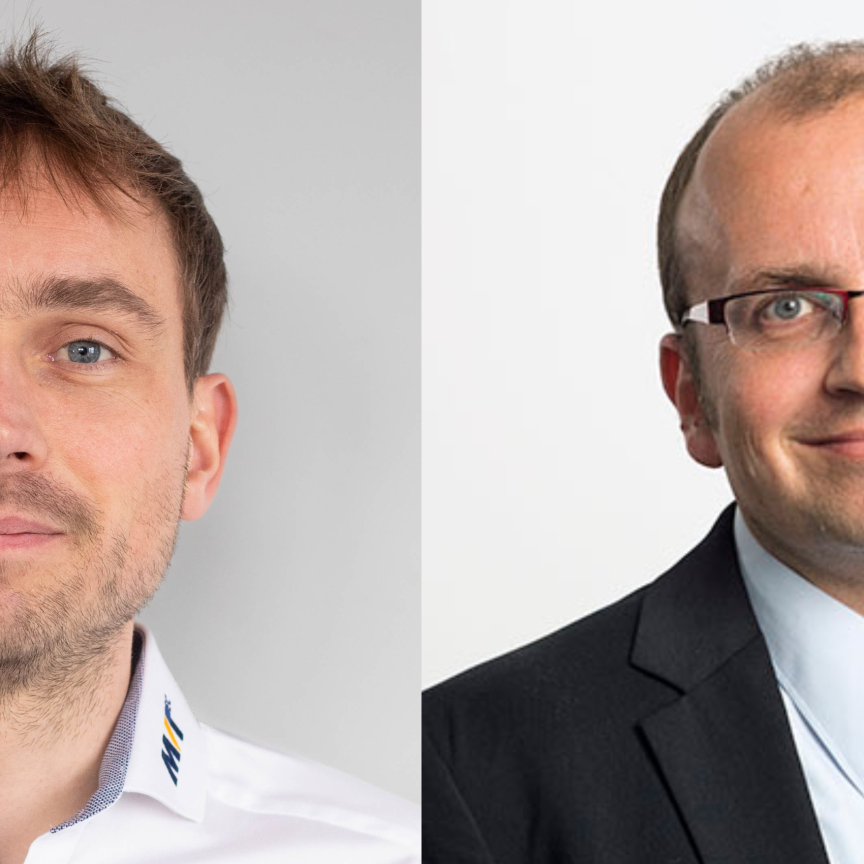Situated in the city of Mannheim, in south-western Germany, Silicon Software was founded in 1997 by managing partners Klaus-Henning Noffz and Ralph Ralf Lay.
Both studied physics at university, and jointly wrote a thesis on image processing – specifically, in relation to visualising the inside of an atom. Noffz explains: ‘It is a fairly simple image detection task, but you only have nanoseconds to create the image, so you need a very fast system to be able to detect it.’
The pair developed a system based on multiple FPGAs (field-programmable gate arrays – integrated circuits designed to be configured by a customer or a designer after manufacturing), and a bespoke software to program them. This software evolved to become the basis of Silicon Software’s first product – though, unsurprisingly, the required complexity has increased vastly from the early days; from thousands of elements to millions of elements, so it can be used for very simple imaging tasks as well as complex ones.
Skilling up
Noffz and Lay began to recruit other scientists with backgrounds in physics. Seventeen years later, Silicon Software now has 35 employees, of whom 16 are skilled in hardware programming. ‘This is a very high proportion,’ explains Noffz. ‘A more typical proportion would be one or two hardware programmers in a company of 100 people; around 50 per cent of our staff have highly specialised knowledge.’ Last year an affiliate company was formed in Nashua, near Boston, USA.
The company operates in highly specialised markets, with customers approaching Silicon Software with very specific problems that need to be solved, says Noffz: ‘We have an off-the-shelf product line, but also a customised one. We operate in typical industrial machine vision markets – as well as in non-industrial applications such as entertainment.
‘One recent project has seen us using image processing in fields related to gambling, to solve the issue of a roulette wheel seeming to spin backwards when it is rotated. This has been used for customers who provide a facility for gamblers to bet on roulette in a room on their own, watching the wheel spin remotely – this is not a market I even knew existed beforehand! The customer needed to provide a high-quality image of the wheel, without the impression that the spokes of the wheel is turning backwards. This is a typical non-industrial application, but with industrial quality requirements.’
Specifying accuracy
Noffz estimates that the company’s sales are roughly split 50/50 between off-the-shelf and bespoke products: ‘Because of the way we programme FPGAs we are able to offer modification and individualisation that sits in an area somewhere between off-the-shelf and fully customised products.
Accordingly, for many customers, the sales process can be fairly lengthy: ‘We need very detailed information and specifications with each sales enquiry and we have an exhaustive process to ensure that we have all the correct information from the outset,’ says Noffz.
‘The flip side is that our customer loyalty is very high, because they come to have confidence and trust in what we can do as a company. Of course we have a dedicated sales team, but it is important for us that our customers have direct contact with our engineers as well. The more layers an enquiry has to pass through, the more chance there is of the required information being incorrect. For children, of course, Chinese whispers is an amusing game, but it’s a situation we want to avoid in the sales process!’
For Silicon Software the European market – and Germany in particular – is very strong, but the company has customers worldwide with extensive work in Japan and Korea, for example.
Focusing on the future
Noffz continues: ‘In the last few years the requirements for image acquisition systems have changed a lot; we operate in many different markets but they are all linked by the requirements demanded of our products.
‘We have less competitors these days. The frame grabber market is less attractive now for lots of companies, and many of them are converting to become pure camera companies. I think a lot of them decided that the market was not big enough; if you project the market forward there will be less demand for frame grabbers. Conversely, for us it is perfect because we feel we’ll be able to gain a bigger market share, even if the market is smaller.
‘We’ve also seen, actually, that the impression of a shrinking market is not necessarily true – we are still getting involved in lots of projects that can only be realised with the use of frame grabbers – certainly in applications with a real-time requirement, even at so-called interfaceless standards such as gigabit ethernet frame grabbers.’
Noffz concludes: ‘Future markets will demand more technological prowess and we believe frame grabbers and image processing will become more important in automation; much of our work is centred around finding a solution for frame grabbing on the factory floor.
‘We are clear that there is a market here, and there is lots of interest from companies wanting to find new solutions for the production line.’

